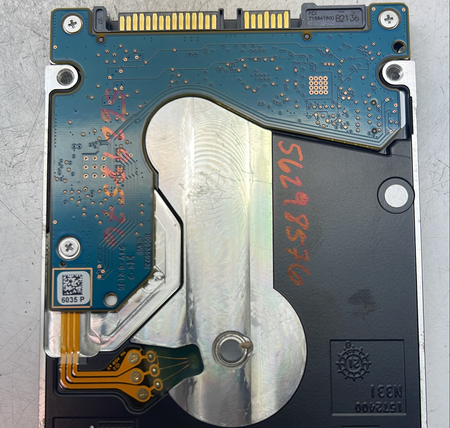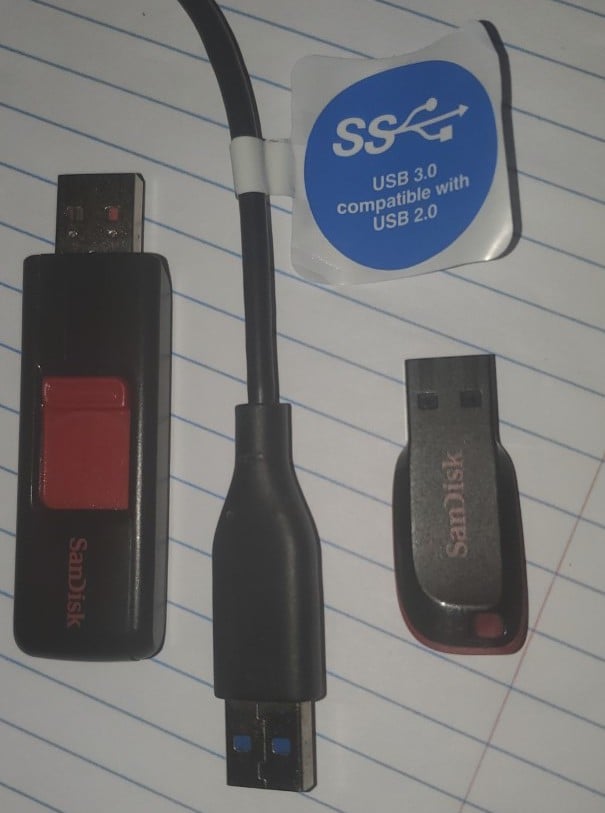You may have heard friends, family, or coworkers talking about serial advanced technology attachment (SATA) hard drives. In situations like this, it would only be natural to wonder: What is SATA hard drive?
Simply put, a SATA hard drive is a drive that uses the SATA interface to connect your hard drive with the motherboard of your computer. If your machine does not utilize a hard drive with a NVMe, PCI-e, or M.2 storage interface, SATA is essential to operating your computer. At the end of the day, a computer is useless without data. SATA hard drives have been standard for many computers for the last two decades. You may even have one in your home computer or laptop. After you finish reading this article, you will have a better understanding of SATA hard drives and how they relate to your machine.

So, What is a SATA Hard Drive?
It is a common misunderstanding that a SATA drive is equivalent to a hard drive that has spinning discs inside it. To clarify this misconception, every hard drive that has spinning disks inside it is a hard disk drive (HDD). The other major type of hard drive is the solid state drive (SSD), which uses NAND flash to store data instead of platters (the spinning disks). SSDs do not have moving parts. SATA does not refer to HDDs or SSDs specifically but to the interface responsible for facilitating communication between your hard drive and your computer. SATA is still a relevant technology, that said, it is being superseded by a number of alternative interfaces including: SATA Express, mSATA, M.2, PCI Express (PCIe), and NVMe.
While SATA may still be widely utilized around the world, there are limitations… The typical SSD with a SATA interface will have a maximum read-write speed of around 600MB/s, while a NVMe SSD can offer read speeds of 3500MB/s and write speeds of 2500MB/s. It should not be surprising that some users benefit from being able to transfer data 4x to 5x faster by using NVMe than SATA. The steadily declining price of solid state storage is certainly contributing to the rate of adoption for newer hard drives which are far more likely to utilize a standard that’s newer than SATA.
How was the Serial AT Attachment Developed?
SATA was developed to replace the aging parallel serial technology attachment (PATA) protocol. Specifications for SATA were specified by the Serial ATA International Organization (SATA-IO), a non-profit group responsible for publishing interoperability specifications for SATA devices. One of the major changes of moving from PATA to SATA is an improvement in read and write speeds. Another benefit that contributed to SATA’s popularity is smaller cables, making hard drives easier to install, and cable management more manageable.
What are Buses, and how do they relate to SATA?
The short answer is that a bus is a type of plug that lets a computer component (such as a hard drive) directly connect to another component (usually the motherboard or an expansion card). For a computer to be useful, hard drives need to be able to transfer data to the central processing unit (CPU). The CPU will read data from a hard drive (potentially through a SATA interface), store some of that data in RAM, send some of that data to user’s screen, etc. The point is that buses are necessary to send and receive data.
What is a Computer Bus?
A computer bus is simply the interface that allows components to transfer power and data to one another. The bus provides the physical connection point on the motherboard or expansion card. The SATA cable would be connected to the bus itself on one end, and the hard drive’s SATA interface on the other.
Computer bus ports can come in different varieties with variable pin-counts, purposes, and shapes. A common example of a computer bus is a USB port. The Universal Serial Bus (USB) is a standard connector which allows users to connect a range of devices to their computers. Think of the term SATA the same way you think of USBs. It is simply a commonly used interface for connecting electronic devices.

What is a Host Bus?
A host bus, also known as a host bus adapter (HBA), is a type of circuit board that helps connect host systems (like a PC, laptop, or server) to devices like a SATA hard drive. Many host buses can be connected directly into the motherboard, allowing them to transfer data to and from the CPU and the other components that make up your computer. You can also use host buses to connect other types of devices, including ethernet, fibre channel, FireWire, IDE, SAS, SCSI, and USB.
What is a SATA Hard Drive – Conclusion
SATA hard drives will almost certainly maintain relevance for the foreseeable future. While there are some countries that quickly adopt new technology and dispose of their old equipment, there are also parts of the world where older devices are standard. Regardless, hopefully this article has helped you understand what a SATA hard drive is and how it relates to other components in your computer.
